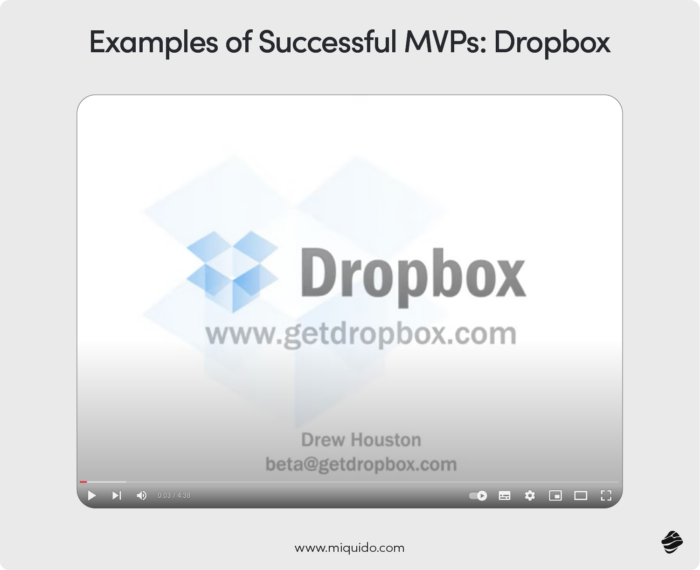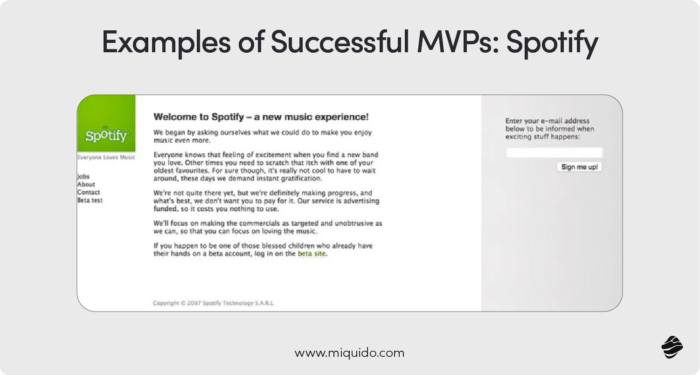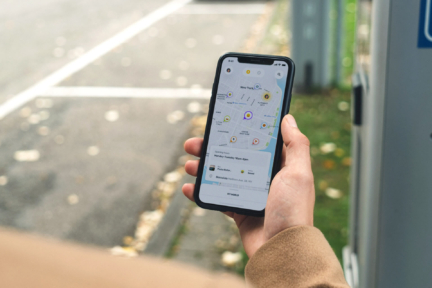The concept of a Minimum Viable Product (MVP) has emerged as a cornerstone for creating impactful, user-centric solutions while optimizing development costs and time. MVP in software development refers to building a software product with the least effort and essential features required to satisfy early adopters and gather valuable user feedback. This iterative process enables teams to validate the product idea, refine the core features, and shape the product concept based on real user interactions and market validation.
CEOs and project managers are increasingly leveraging agile methodologies, no-code development platforms, and data science to enhance MVP development. These approaches emphasize selecting the most critical features, minimizing technical limitations, and designing a robust MVP architecture that ensures maximum value with minimum features for mobile and web applications. In contrast, a full product includes all the features that a company aims to incorporate after the initial MVP has validated the product concept and user feedback has informed further development.
The MVP development process also focuses on validated learning from potential users, enabling businesses to adapt quickly to evolving needs and integrate additional features in future development. As businesses aim to achieve sustainable growth, MVP functionality helps align technical knowledge with market testing, ensuring that the development effort leads to a software product that resonates with user scenarios, delivers a compelling value proposition, and accelerates monthly recurring revenue in the earlier stages of the software project.
What is a Minimum Viable Product?
In software development, a Minimum Viable Product, or MVP for short, is the simplest version of a digital product, built with only the essential functionality to satisfy early users. It can typically be developed within 1-2 months, allowing you to launch quickly while keeping the future in mind.
Starting small doesn’t mean compromising on strategy. Your MVP should be thoughtfully designed to support future scaling and enhancements. It doesn’t need to be perfect, though. The focus is on delivering core functionality that works and resonates with your target audience. An MVP does not include all the features that will be in the final product.
Why develop an MVP?
Developing an MVP is a popular way to validate your idea quickly, save resources, and minimize risks. If your MVP clicks with users, you know you’re heading in the right direction. If not, you’ve spent less time and money discovering that, which is a win in itself.
Minimum Viable Product in software development
The importance and purpose of MVP in software development cannot be overstated. An MVP is a crucial step in the development process, allowing developers to test their product idea, gather user feedback, and make necessary adjustments before investing in further development. The primary purpose of an MVP is to validate the product concept, minimize development costs, and test the product in the market. By releasing an MVP, developers can gauge user interest, identify potential issues, and make data-driven decisions to improve the product.
Key characteristics of MVP in software development
A successful MVP should possess certain key characteristics. These include:
- Clear understanding of the target audience and market: Knowing who your users are and what they need is fundamental. This ensures that the MVP addresses real problems and provides value.
- List of potential core features: Identify features that will set your product apart and make it unique. These should be aligned with the needs and preferences of your target audience.
- Prioritized list of essential features: Focus on the features that will have the most significant impact on the user experience. Use prioritization techniques to ensure that the most critical functionalities are developed first.
- Functional, high-quality product: Even though an MVP is minimal, it should still be a high-quality product that meets the minimum requirements of your target audience. It should be reliable and provide a seamless user experience.
- Commitment to continuous improvement: An MVP is not a one-time effort. It requires ongoing iteration and enhancement based on user feedback. This commitment to continuous improvement ensures that the product evolves to meet user needs and market demands.
Purpose of MVP in software development
The reality is that premature scaling is responsible for the failure of more than 70% of startups. Starting small with an MVP helps minimize this risk, making it a practical approach for businesses to validate ideas and reduce uncertainty before scaling. The primary purpose of an MVP is to validate the product concept, minimize development costs, and test the product in the market. Once the MVP is validated, the product can be developed further to include all the features.
Here’s why the MVP approach is such a big deal:
- Validating product ideas – MVPs are essential for validating product ideas efficiently. Instead of investing months (or even years) to develop a fully-featured product, teams can launch an MVP to test core assumptions. This approach lets you gather real-world user feedback early to ensure your concept resonates with the target audience.
- Reduces risks – The MVP process significantly reduces risks in software development. Every product launch carries inherent uncertainties. Will users adopt it? Or will it miss the mark?
An MVP allows you to address these uncertainties by testing a working product in the market before committing substantial resources. It’s a practical way to uncover flaws, validate key functionalities, and refine the product without jeopardizing the entire project.
- Provide valuable insights – MVPs ensure market fit by providing valuable insights into user needs and preferences. You can fine-tune your offerings to align with real demand if you observe how users interact with the software and listen to their feedback.
This iterative approach lays a solid foundation for scaling the product with confidence, knowing that the next steps are informed by actual user behavior rather than guesswork.
Benefits of building an MVP
Given that 9 out of 10 startups fail to survive the test of time, focusing on an MVP can help increase the chances of success.Here is how an MVP benefits you:
Faster time to market
An MVP prioritizes speed by focusing on the core functionalities of your product. This approach avoids the delays associated with developing all the features of a full product. This allows you to bring your idea to market quickly, ensuring you gain an early foothold and start gathering user feedback without unnecessary delays. Launching early also helps you respond to market needs before competitors can.
Cost efficiency
Developing an MVP means using resources strategically. You narrow the scope to essential features, which saves time and money that might otherwise be spent on unnecessary elements.
Additionally, these savings can be reinvested in future updates or marketing efforts. It makes sure your budget works harder for you.
Valuable user feedback
Releasing a minimal viable product gives you access to real-world user feedback much sooner than if you waited to build a full product. This direct input helps you identify what users love and what needs improvement. It helps guide your product roadmap with more precision.
Risk reduction
Launching a product always carries risks, but an MVP minimizes them. Instead of gambling on a fully developed product, you test your idea on a smaller scale, addressing potential issues early.
The MVP approach protects your investment and provides clarity on whether to proceed, pivot, or halt further development.
Flexibility and agility
Because an MVP is built with iteration in mind, it allows you to adapt quickly based on user feedback or market changes. This flexibility ensures your product stays relevant and continues to evolve alongside user needs and expectations.
Proof of concept for stakeholders
You can use your MVP as Proof of Concept (POC) to demonstrate the viability of your idea to investors, partners, or other stakeholders.
A POC in software development validates your idea’s feasibility, showing that it can be executed effectively and has the potential to meet market needs. After all, a working product with real user feedback is far more persuasive than a pitch deck or a prototype. It shows you’re serious and that the market is responding to your idea.
How to build a Minimum Viable Product?
Like every software development project, crafting an MVP requires careful planning and execution to ensure you focus on what matters most. Follow this guide to mobile app development to create a product that delivers value and insights from the start.
1. Define your problem and target audience
It’s critical to start with identifying the specific problem your product will solve and the users it’s meant for. Performing market research and understanding your target audience ensures that the MVP addresses their needs effectively.
You can get that information by conducting user interviews or surveys to confirm the problem exists and is significant enough to warrant a solution.
2. Study the Competition
Studying the competition is a critical step in the MVP development process. By analyzing the strengths and weaknesses of similar products, developers can identify gaps in the market, understand user needs, and create a unique value proposition for their product. This involves researching the competition’s features, pricing, marketing strategies, and user engagement. By doing so, developers can create an MVP that differentiates itself from the competition and meets the evolving needs of the target audience.
3. Prioritize core features
Once you know the target audience and their problem, focus on the core functionality that solves it. Avoid feature overload. Your MVP should do one thing really well.
To achieve this, use methods like the MoSCoW framework (Must-have, Should-have, Could-have, Won’t-have) to prioritize features based on their importance and relevance. It’ll keep your MVP lean and purposeful.
Product discovery workshops are an excellent practice at this phase, as they bring together stakeholders, software development team members, and user insights to clarify goals and align on the problem you’re solving.
4. Plan your development process
Once you’ve defined the features, outline the technical requirements and decide on the tools or platforms you’ll use. A clear timeline with assigned tasks helps the team stay aligned and ensures efficient progress.
You can use project management software like Trello and Jira to plan the project. Also, choose simple and cost-effective development technologies where possible to avoid overcomplicating the initial build.
5. Build and test
With your plan in place, start developing the Minimum Viable Product. Keep the focus on usability and functionality, making sure the product delivers its intended value without distractions.
Before launching, rigorously test the product for bugs, usability issues, and overall performance. Make sure it provides a seamless experience for users to get accurate feedback from them. You don’t want a good product to get overwhelmed by bad feedback due to usability issues.
6. Launch and gather feedback
Release your MVP to a small, representative audience, such as early adopters or beta testers. Your users will provide valuable insights into the product’s performance in real-world conditions.
Use surveys, interviews, and analytics to understand user behavior and preferences. Tracking metrics like user engagement and retention rate will help you evaluate the product’s success.
MVP vs. Prototype vs. Full product: Comparison
These terms often confuse people, so let’s clarify the differences:
Prototype
A prototype is a rough model or mockup used to visualize the product idea. Prototypes are often created to demonstrate the concept, explore design options, or communicate the vision to stakeholders. They are usually static and require no coding, making them a cost-effective way to refine the idea before committing to development.
Minimum Viable Product
MVP is a working version of the product with minimal features to test user demand. Unlike a prototype, an MVP is fully functional and designed to provide real value to users. It allows teams to validate their assumptions, gather feedback, and make data-driven decisions about future development. While limited in scope, an MVP must be stable and reliable enough for real-world use.
Final product
This is the complete, polished product built after validating and iterating on the MVP. It includes all the planned features, refined design elements, and optimizations based on user feedback. The final product contains the features that were not included in the MVP or features that were upscaled from the initial version.
The final product is market-ready, offering a seamless user experience and addressing broader customer needs.
To conclude, an MVP is more functional than a prototype but far less complex than a final product.
Examples of Successful MVPs
Many successful companies began with a Minimum Viable Product (MVP) to validate their ideas before scaling. According to Goodfirms’ survey, over 91.3% of the businesses questioned responded that they have already launched a product with an MVP approach.
Here are some well-known examples:
Dropbox
In its early days, Dropbox faced the challenge of conveying its cloud storage concept to users. Instead of building a full product, founder Drew Houston created a simple explainer video demonstrating the software’s functionality.
Although it may sound like a well-made demo video, this was actually an MVP. The founder used this video to build a waitlist. This helped them gauge the demand and market fit for the product.
The video validated Drew’s leap-of-faith assumption that customers wanted the product because their beta waiting list jumped from 5,000 to 75,000 overnight.
Airbnb
Airbnb’s founders, Brian Chesky and Joe Gebbia, struggled to pay rent in San Francisco. They launched a basic website offering short-term lodging in their apartment during a local conference.
The offer was simple: you get an overnight stay on air mattresses in their living room. The result was that three guests paid $80 each.
The initial MVP was incredibly simple, with no robust website or options for selecting multiple dates, locations, or prices.
It targeted a specific audience: tech conference attendees at a single sold-out event. And the outcome was that people were willing to pay to stay in a stranger’s home.
That early success provided valuable insights into user preferences and behaviors, informing the development of features like user profiles, reviews, and secure payment systems.
Their MVP allowed them to test the market demand for such a service, leading to the platform’s evolution into a global hospitality giant.
Spotify
Spotify’s creators’ primary focus was a critical metric: “How many milliseconds does it take from pressing Play to hearing the music?” Their goal was to deliver music that played almost instantly and streamed smoothly without interruptions.
The startup began by releasing a beta version of its music streaming service to a limited audience in Sweden. The Spotify MVP focused on core functionalities like streaming and playlist creation, helping the team gather user feedback and refine the product.
This early success confirmed the product’s potential and set the stage for worldwide growth. Today, the company has a market cap of $91.82 billion!
Common mistakes in MVP development
If you’re doing it for the first time, it’s best to follow expert advice to maximize the value of your MVP and avoid costly missteps. Product strategy consulting can also provide valuable guidance, helping you define clear goals, prioritize features, and align your MVP with long-term business objectives.
Having said that here are the pitfalls to watch out for when building your MVP:
Adding too many features
Your MVP should focus on solving one core problem. Including too many features adds unnecessary complexity and dilutes the product’s purpose.
Neglecting user feedback
If you don’t collect feedback from real users, you miss the opportunity to understand what works and what needs improvement. Feedback is the backbone of MVP success.
Losing sight of your goals
Without clear goals, it’s easy to lose focus and end up with an overcomplicated product. Keep your objectives front and center throughout the MVP development process.
Skipping proper testing
Even an MVP must function reliably. Failing to test thoroughly can result in a poor user experience and hurt your product’s potential.
Targeting the wrong audience
Testing with people outside your target market leads to irrelevant feedback. Make sure your audience matches your intended users.
Failing to define success metrics
Without measurable goals, it’s impossible to know if your MVP has succeeded. Define metrics like retention, engagement, or task completion before launch.
Treating the MVP as the final product
An MVP is a starting point, not the end goal. Launch, refine, and build a more complete product over time.
Avoid these common mistakes to ensure your MVP fulfills its purpose, which is to validate your idea while saving time, money, and effort.
MVP best practices
So rather than building quickly, build your Minimum Viable Product thoughtfully. The key to a successful MVP is focusing on core functionalities. Identify the single most important problem your product solves and design features that directly address it. Keeping it simple ensures your MVP is impactful and saves you time and resources.
Setting clear goals is essential for guiding your MVP development. Define what you want to achieve, whether it’s collecting feedback, proving market demand, or testing specific functionalities. Clear, measurable objectives help your software development team stay aligned, make informed decisions, and evaluate the success of your MVP after launch.
While your MVP should be minimal, it’s crucial to build with scalability in mind. Plan for MVP and app scaling from the start to ensure your product can accommodate new features and handle increased demand as it grows.
Using flexible technologies and scalable architectures enables seamless feature additions and performance upgrades. This approach ensures your MVP evolves smoothly into a full product without requiring extensive rework.
Your MVP isn’t static—it’s the first step in a continuous learning process. Therefore, regularly track KPIs (Key Performance Indicators) like user engagement, retention, or feedback patterns to identify areas for improvement. Use these insights to iterate and enhance your product to meet user needs and market demands.
User feedback and iterative development
User feedback is the heart of the MVP software development process. Once your MVP is live, focus on collecting data from diverse sources such as surveys, user reviews, and analytics tools. This feedback will reveal what users value most and highlight areas that need attention.
With user insights in hand, prioritize changes based on their frequency and impact. Addressing the most common pain points first ensures your product evolves in a way that aligns with user expectations.
At the same time, stay true to your original goals to maintain focus and consistency in development.
Iterative development allows you to build on these improvements step by step. Continuously refine your product based on real-world feedback to ensure it grows alongside user needs. This enhances your product’s success and market relevance over time.
Minimum Viable Product case study
Let’s assume you’re developing a fitness app to help users build healthy exercise habits through simple tracking and motivational tools.
You’ve identified a common problem: many people struggle to stay consistent with workouts because they lack an easy way to track progress and celebrate small wins. Instead of launching a fully-featured app with workout videos, meal planning, and social sharing, you decide to start with an MVP that focuses on core functionalities.
The MVP for your mobile app includes:
- A basic habit tracker where users can log their daily workouts
- A streak counter to motivate users by showing how many consecutive days they’ve exercised
- A single push notification reminding users to log their workout for the day
You launch the MVP to 500 beta testers, promoting it through fitness forums and local gym communities. Within weeks, you gather valuable feedback.
Many users love the streak counter but want a way to customize their workout types (e.g., running, yoga, or weightlifting). Some also suggest adding a feature to track missed days without breaking the streak entirely, as life sometimes gets in the way.
Based on this feedback, you plan the next iteration:
- Allowing users to categorize their workouts
- Introducing a “pause streak” feature for planned rest days
- Improving notification timing based on user preferences
Focusing on the app’s core purpose (building consistent exercise habits) helps you keep development costs low while learning what features users genuinely want.
As your app grows, you can add premium features like personalized workout plans and integrations with fitness wearables, building on a solid, user-validated foundation.
In Closing
So there you have it, a thorough answer to what is MVP in software development.
To sum up, building a Minimum Viable Product in software development is a strategic way to move faster and minimize risks. It helps you validate ideas, prioritize resources, and reduce uncertainty.
Focusing on core functionalities, setting clear goals, and building with scalability in mind creates a strong foundation for your product. Collecting user feedback and embracing iterative development also ensures your MVP evolves to meet real user needs and aligns with market demands.












